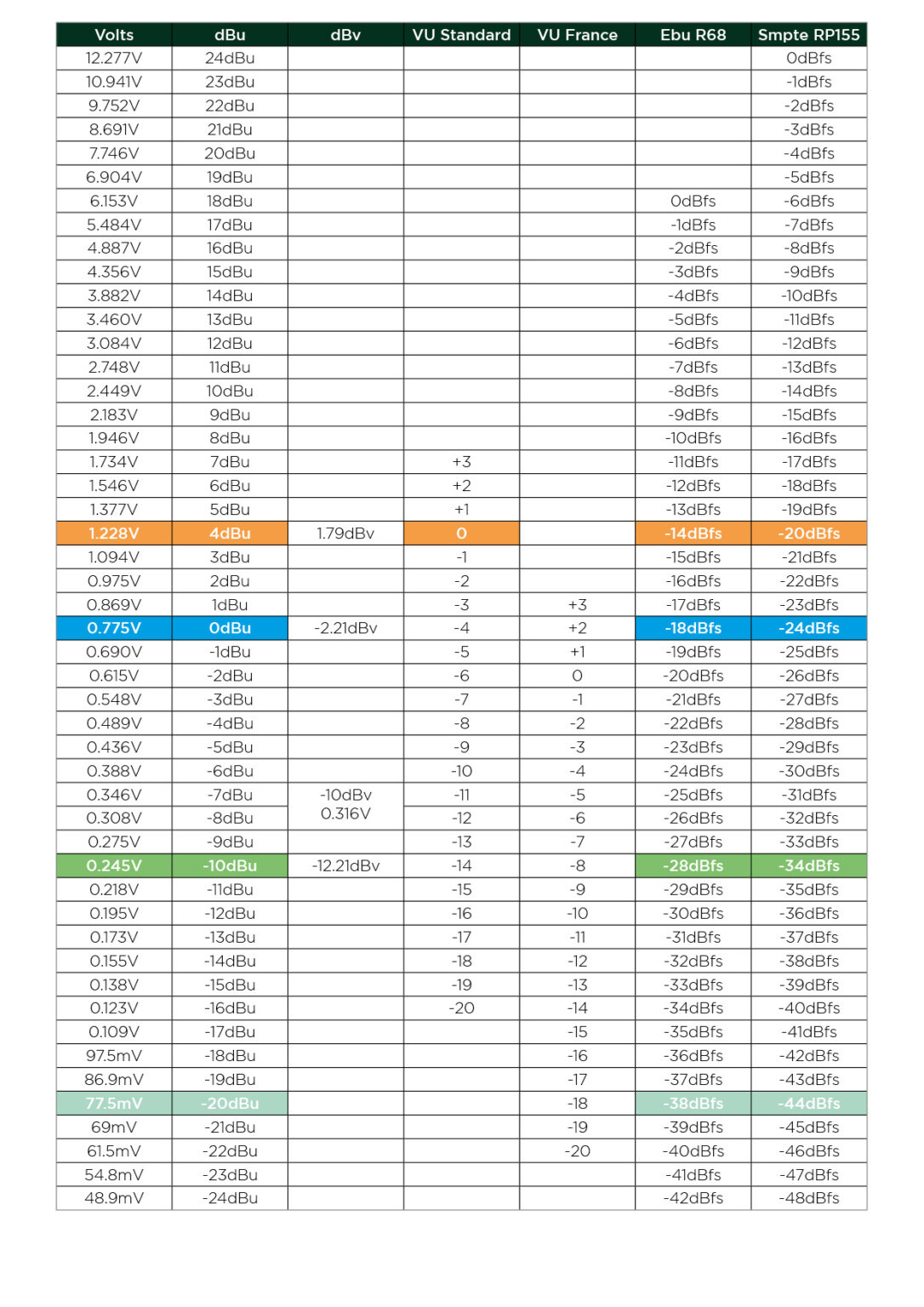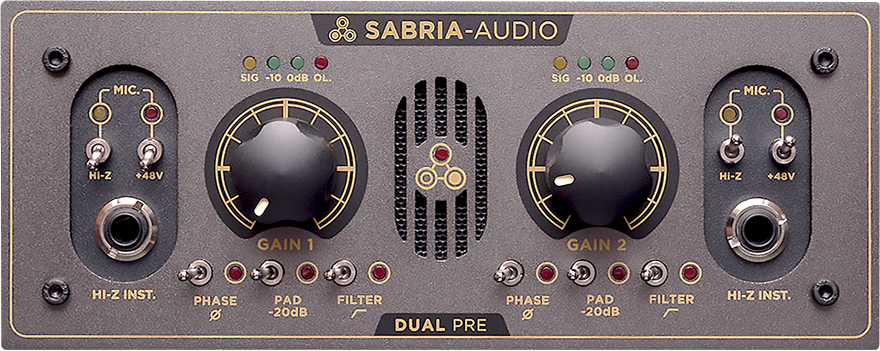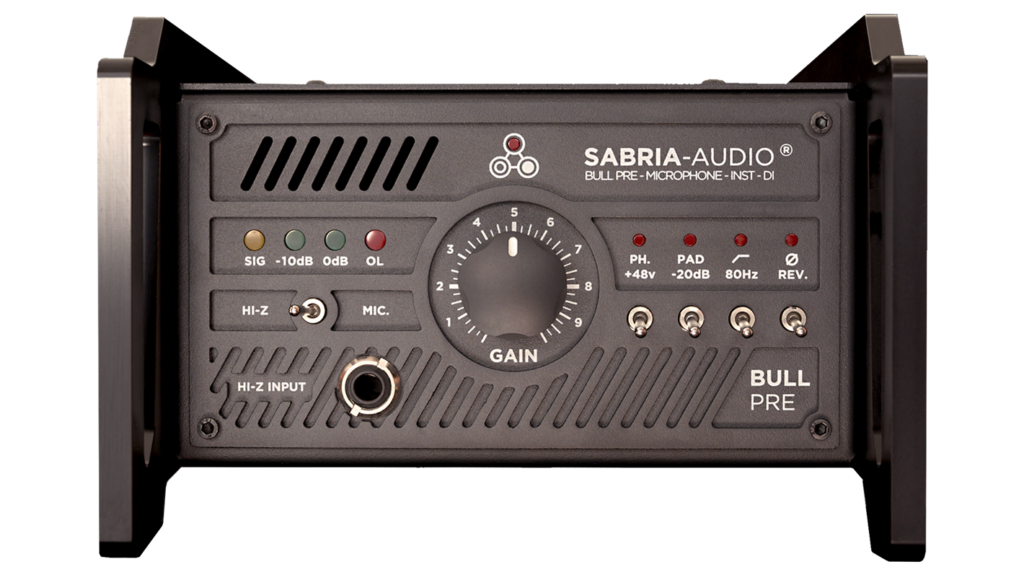Pro-tip #1
Sabria-Audio®
Preamp output levels | +4dBu/-10dBv
Matching levels... Keys for a coherent audio path.
These detailed informations provide valuable insights into the complexities of audio signal levels, the differences between +4 dBu and -10 dBV, and how they are managed in professional and semi-professional audio equipment. Here's a summary of the key points of the normalized +4/-10 preamp output levels.
Difference in Reference Levels:
• +4 dBu and -10 dBV normalized preamp output levels are reference levels used in the audio industry, with both referencing 0 dB as a specific voltage level (0.775 volts).
• +4 dBu has a specific voltage of 1.23V and the -10dBV has a voltage of 0.316V (316mV).
• The apparent 14 dB difference between +4 dBu and -10 dBV is not a straight 14 dB because they are referenced to different absolute values (dBu vs dBv).
• The actual difference between +4 dBu and -10 dBV is about 11.78 dB, considering their reference values. (See Fig. A)
Historical Context:
• +4 dBu is a professional, high-level standard used in studio equipment.
• -10 dBV became popular in semi-professional and home recording gear in the 1980s as a cost-saving measure. It operates at lower levels, and noise considerations were often secondary.
Signal Matching:
• When connecting equipment with normalized preamp output levels, you may need to adjust signal levels to avoid noise or distortion.
• Going from a -10 dBV output to a +4 dBu input increases the noise floor, so you might need to add gain on the +4 dBu side.
• Going from a +4 dBu output to a -10 dBV input can result in distortion due to the higher signal level, and you might need to attenuate the signal.
Impedance Matching:
• Impedance matching is important for some audio connections, but for line-level signals, it's generally less critical.
Output Levels:
• The difference between +4 dBu and -10 dBV primarily lies in the output level of the equipment.
• +4 dBu equipment provides a higher output level, and -10 dBV equipment provides a lower output level for the same amount of internal gain.
Signal Flow:
• It's important to consider the signal levels at different points in your audio signal chain and adjust them accordingly to ensure proper operation and minimize noise and distortion.
• Managing signal levels and interfacing different types of gear is really important, so check the technical data manuals of your beloved gear.
• Understanding basic electronics principles, voltage, current, and impedance can greatly help in working with audio equipment.
Few examples:
• Generally, the semi-pro mixing consoles doesn’t have a dedicated +4dBu line level input. So if you plan to connect an external preamp, don’t forget to adjust a -10dBV level output.
• The pro mixing desk consoles have a dedicated Line input that matches with a +4dBu input source.
• The audio interfaces have generally a +4dBu/-10dB physical switch or software options to match with the rest of your peripherals. Then, if you want to record directly through your preamp and a +4dbu audio interface, don’t forget to adjust a +4dBu output level. Everything’s matched.
The Sabria-Audio® Preamps have an adjustable +4dBu/-10dBV preamp output level, like the
The Sabria-Audio® Preamps have an adjustable +4dBu/-10dBV normalized preamp output level, like the Source Tube Preamp, Dual Pre or the Bull Pre. On the Source Tube Preamp, you will find an additional with a selectable +4dBu/-10dBV input. This flexible switching ability is to fit with all the semi-pro and pro standards of the music industry.
Sabria-Audio® Preamps | +4dBu/-10dBv | Create & Re-Create
The different audio scales, voltages, dB & vu-meters.
EBU "R68" is more widely known as BBc Spec ans is common to the Uk ans some european countries. SMPTE "R155" is in commonusage in Noth America, Asia and Oceania. Twice have the same dBfs unit; dBfs is 'full scale" as we can find on digital consoles or various softwares.








